Large Kitchen Layout Design: 8 Common Mistakes to Avoid
Designing a large kitchen involves more than choosing the right appliances and color schemes. A well-thought-out layout is crucial, especially for larger kitchens, where the abundance of space can be both a blessing and a challenge.
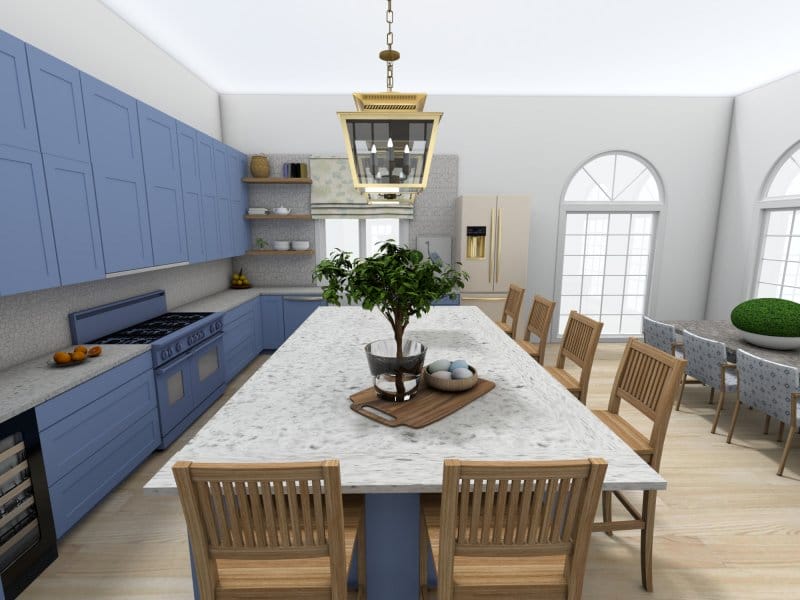
A skillfully planned large kitchen layout enhances the functionality and efficiency of your cooking space and transforms it into a welcoming hub for family gatherings and social events. However, even the most spacious kitchens can suffer from poor design choices.
This article will delve into common pitfalls that can compromise a large kitchen's practicality and aesthetic appeal. By understanding these mistakes, you can ensure your kitchen space is expansive and exquisitely tailored to your client’s lifestyle and needs.
Mistake #1: Poor Workflow Planning
In planning a large kitchen layout, a common mistake lies in poor workflow planning and neglecting the significance of the kitchen work triangle. This concept, a staple in kitchen design, refers to the spatial arrangement between the three most used areas in the kitchen: the sink, stove, and refrigerator. These should be placed in a triangular layout to facilitate accessibility and efficient movement between these key areas.
When this triangle is well-proportioned, it minimizes unnecessary steps during cooking and cleaning, making kitchen tasks more streamlined and less tiresome. Poor planning in this regard can be significant, especially in larger kitchens.
When the work triangle is too spread out, it leads to a disjointed and inefficient kitchen, requiring excessive walking back and forth to complete simple tasks.
Understanding and implementing the work triangle effectively is crucial in designing a large kitchen that is both functional and comfortable.
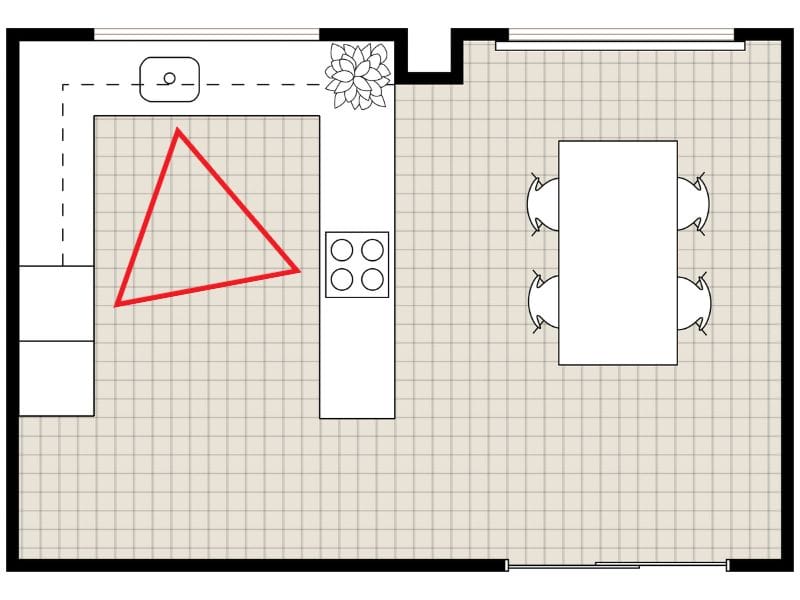
Mistake #2: Inadequate Lighting
Another common mistake when designing large kitchen layouts is overlooking the importance of adequate lighting. Proper lighting in a kitchen is not just about illuminating the space. It's about creating an ambiance, enhancing functionality, and ensuring safety.
Task lighting, such as under-cabinet lights, focuses on work areas like countertops, stoves, and sinks, ensuring you have enough light for cooking and preparation.
Ambient lighting, like ceiling fixtures, provides overall illumination to the space, creating a warm and inviting environment.
Accent lighting is used to highlight design elements, such as inside cabinets or over kitchen islands, adding depth and dimension to the kitchen.
A well-planned lighting scheme is a cornerstone of any large kitchen, enhancing its functionality, safety, and overall aesthetic appeal. Bright, thoughtfully placed lights can transform work areas into vibrant and efficient spaces, reducing eye strain and minimizing the risk of accidents during culinary adventures.
Effective lighting is key to bringing out the best in your large kitchen, ensuring it's a practical workspace and an inviting space.
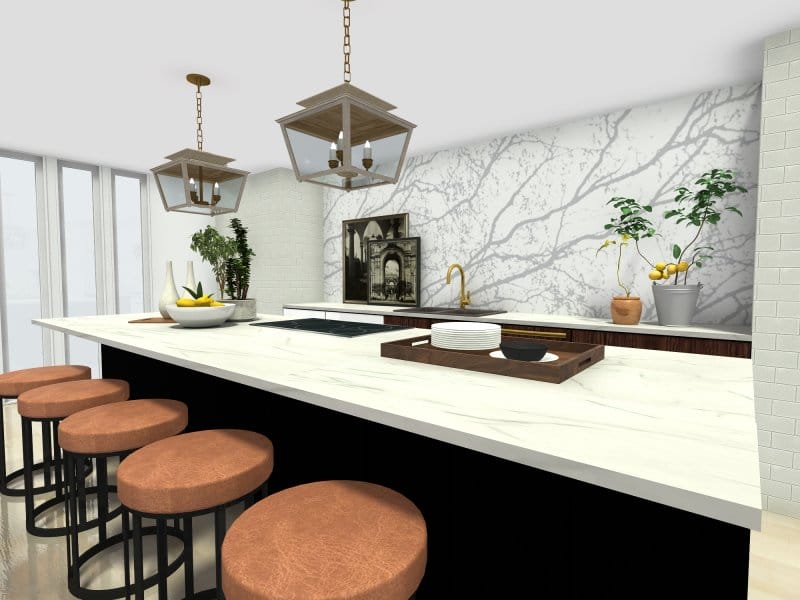
Mistake #3: Overlooking Storage Needs
While a spacious kitchen offers ample room for culinary endeavors, it can quickly become dysfunctional if storage is not adequately considered. The necessity of strategically placed storage solutions cannot be overstated.
A large kitchen layout should have enough storage to keep essentials within reach, reduce clutter, and maintain an organized and tidy appearance.
This includes a mix of upper and lower cabinets, drawers for utensils and cutlery, and perhaps a pantry for dry goods. The positioning of these storage spaces is just as important as their quantity. Items frequently used should be easily accessible, ideally positioned near the area of use.
For instance, pots and pans should be stored near the stove, while dishes and cutlery might be closer to the dishwasher or dining area. Even a large kitchen can feel cramped and chaotic when storage needs are overlooked.
Thoughtful consideration of storage in terms of capacity and strategic placement can significantly enhance a large kitchen's functionality, efficiency, and visual appeal. Ample storage solutions ensure that countertops remain clear and spacious. When appliances and ingredients are neatly organized and easily accessible, it streamlines the workflow, allowing for smooth and efficient movement within the kitchen.
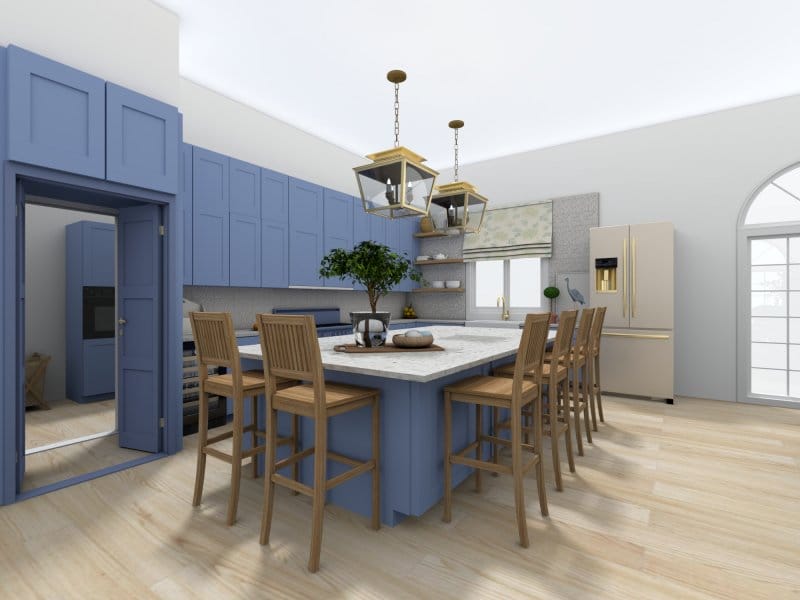
Mistake #4: Neglecting Clearances and Pathways
Proper clearance for large kitchen layouts is about allowing doors and drawers to open fully, while ensuring there's enough room for people to use all appliances comfortably and safely.
For instance, there should be adequate space in front of a refrigerator or oven so multiple people can navigate the kitchen without hindrance. Similarly, dishwasher doors should open without blocking pathways or intersecting with other open appliance doors.
These pathways should facilitate a smooth flow through the kitchen, connecting the various work zones effectively. This is particularly crucial in households where the kitchen is a hub of activity involving cooking, dining, and socializing.
By ensuring ample and well-thought-out pathways, the kitchen becomes a fluid and inviting space, facilitating comfortable movement for cooking and socializing. This thoughtful layout makes culinary tasks a breeze and enhances safety, allowing for the easy and secure handling of hot dishes and sharp utensils.
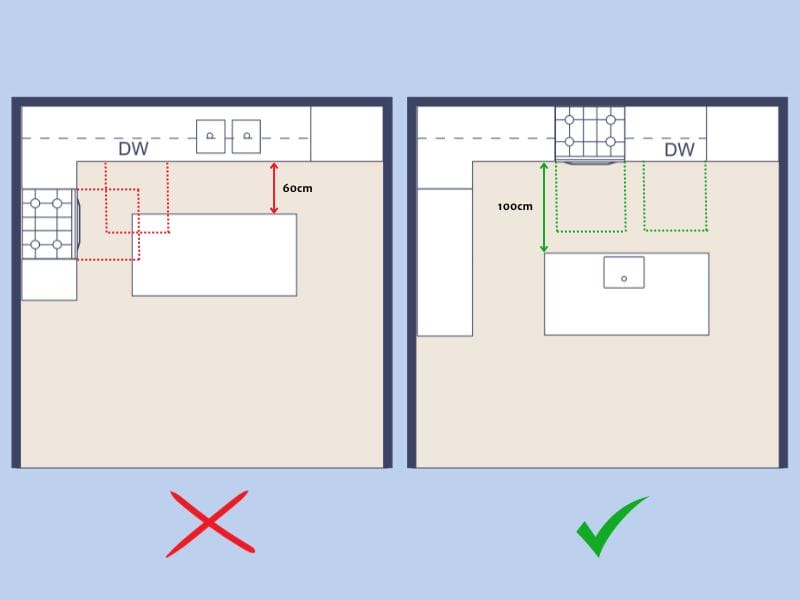
Mistake #5: Choosing the Wrong Island Size
The wrong island size, in any kitchen, but particularly a large one, can significantly impact the kitchen's functionality and aesthetic.
The kitchen island, often the focal point and gathering spot in the space, needs to be proportionate to the kitchen's size and its users' needs. An island that is too large can dominate the space, impeding the flow of traffic and making it difficult to move comfortably around the kitchen. It can also disrupt the work triangle, extending the distance between key areas such as the sink, stove, and refrigerator, thus hindering meal preparation efficiency.
On the other hand, an island that is too small may not provide enough workspace or seating, which is often essential in a large kitchen. It can also look disproportionate to the scale of the room, diminishing the overall aesthetic appeal.
The key is to strike a balance—the island should be large enough to serve its intended purposes, whether it's additional storage, prep space, or seating, without overwhelming the room or obstructing movement.
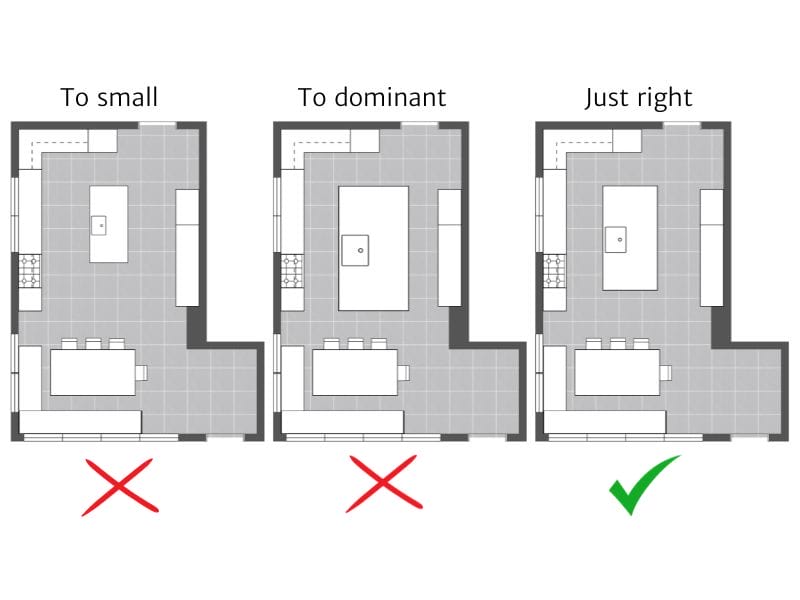
Mistake #6: Ignoring Ergonomics
Ergonomics in kitchen design refers to creating a space that is tailored to the user's physical needs, promoting ease of movement and reducing strain. In large kitchens, where the scale of the space offers ample opportunity for customization, it's vital to consider the height of counters, the depth of work areas, and the placement of appliances.
Counters that are too high or too low can cause back strain during food preparation, while deep cabinets can make reaching items stored at the back difficult. In addition to counter heights and storage accessibility, the layout should also consider the ease of movement between different work zones.
An ergonomic kitchen layout minimizes unnecessary bending, stretching, or walking, thus enhancing the efficiency of tasks.
For example, dishwashers should be placed close to the sink to ease the process of loading and unloading, and frequently used items should be stored at arm's level to avoid excessive reaching or stooping. Ignoring these ergonomic principles can lead to a kitchen that is uncomfortable and potentially hazardous, especially over prolonged periods of use.
Integrating ergonomics into large kitchen designs is not just about aesthetics or space utilization but about creating a harmonious and safe environment that aligns with the natural use patterns of its occupants.

Mistake #7: Forgetting About Ventilation
Don't underestimate the importance of proper ventilation, a critical component that significantly impacts the overall environment of the kitchen. Effective ventilation is key to maintaining a comfortable and healthy space in large kitchens, where cooking activities can be extensive.
Good ventilation systems help remove cooking odors, smoke, and airborne grease, improving air quality. This is especially important in larger kitchens as they can accommodate more appliances and potentially generate more cooking fumes and odors. Good ventilation also contributes to the longevity of the kitchen decor. Without adequate ventilation, moisture and grease can accumulate, which can damage kitchen cabinetry, walls, and appliances over time. In open-plan homes where the kitchen integrates with living areas, proper ventilation becomes even more crucial to prevent cooking smells from permeating throughout the home.
Therefore, incorporating a high-quality range hood that suits the scale of the kitchen and ensuring adequate air circulation are essential steps in designing a large, functional, and enjoyable kitchen space.

Mistake #8: Underestimating Countertop Space
In a large kitchen layout, countertop space is often overlooked in favor of aesthetic or appliance choices. Adequate countertop space is crucial for both cooking and preparation, providing a functional surface for a variety of kitchen tasks.
In larger kitchens, while it might seem that space is plentiful, the countertop area can still be compromised by poor layout choices, such as oversized islands or unnecessary appliance clutter.
The need for sufficient countertop space becomes even more apparent during complex meal preparations or when entertaining large groups. A lack of adequate space can lead to a cramped and inefficient cooking environment, where tasks such as chopping, mixing, and assembling ingredients become challenging.
It's essential to balance the placement of sinks, cooktops, and appliances with ample continuous countertop space. This balance ensures that there is enough room for food preparation, cooking, and possibly even dining or socializing if the countertop doubles as a bar or eating area.
Therefore, when designing a large kitchen, careful consideration should be given to maximizing countertop space, not just for its practical utility in meal preparation but also for its role in the overall functionality
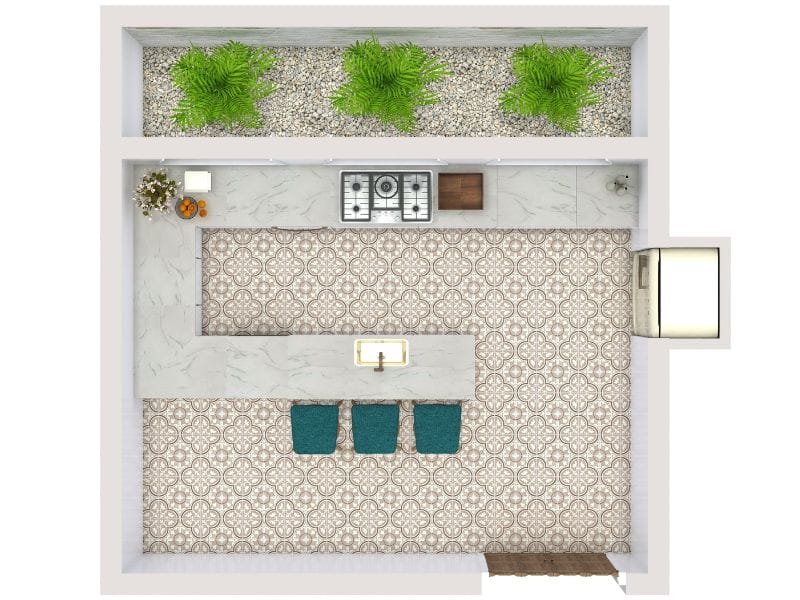
How to Avoid These Mistakes
Avoiding these common design mistakes in large kitchens involves a strategic approach to planning and utilizing tools like RoomSketcher. Its capability to create, visualize, and modify kitchen layouts in real-time can be invaluable in foreseeing potential issues and making informed decisions, leading to a well-designed, functional, and aesthetically pleasing kitchen space
Create your Own Large Kitchen Layout With RoomSketcher
We encourage you to use the insights from this article as a guide in creating an optimal large kitchen layout that not only meets the practical needs of your client but also reflects their personal style and, in turn, enhances a home's value.
With careful planning and a keen eye for detail, your large kitchen can become a harmonious blend of form and function, a space where both daily routines and special moments are equally at home.
Don't forget to share this post!
Recommended Reads
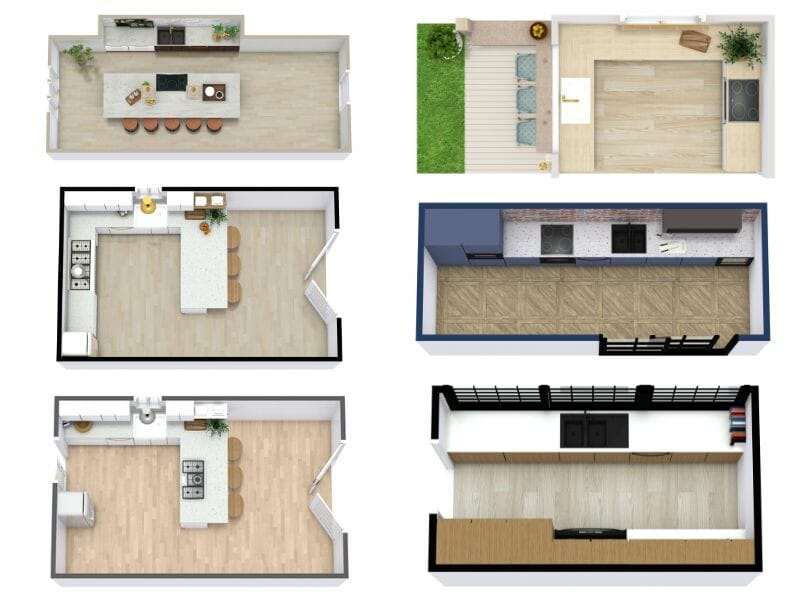
Kitchen Layouts 101 - The Complete Guide
In the heart of every home, the kitchen stands as a hub of creativity, nourishment, and connection. A well-designed kitchen layout is more than just a configuration of cabinets and appliances; it's a blueprint for a seamless culinary experience.
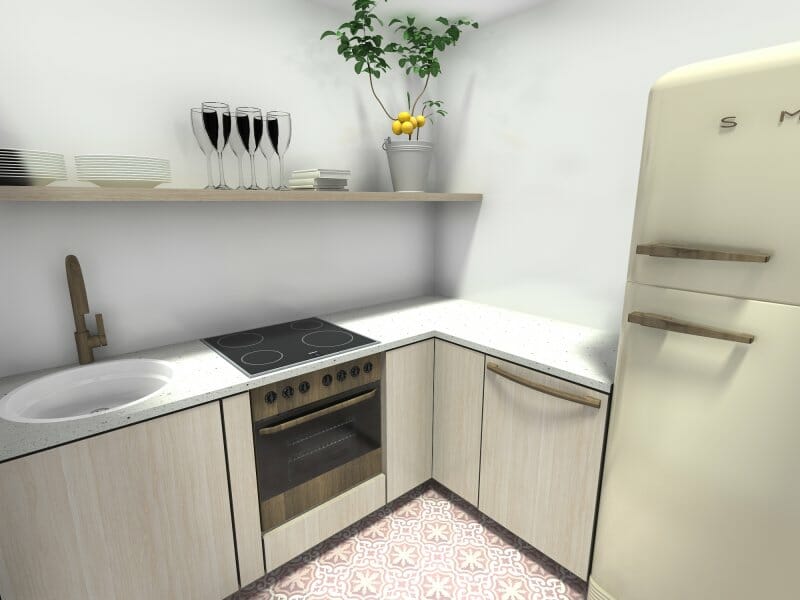
Make a Small Kitchen Layout Feel Bigger With Clever Design Tricks
Create kitchen floor plans in minutes with the easy-to-use RoomSketcher app and discover how to make a small kitchen layout feel bigger
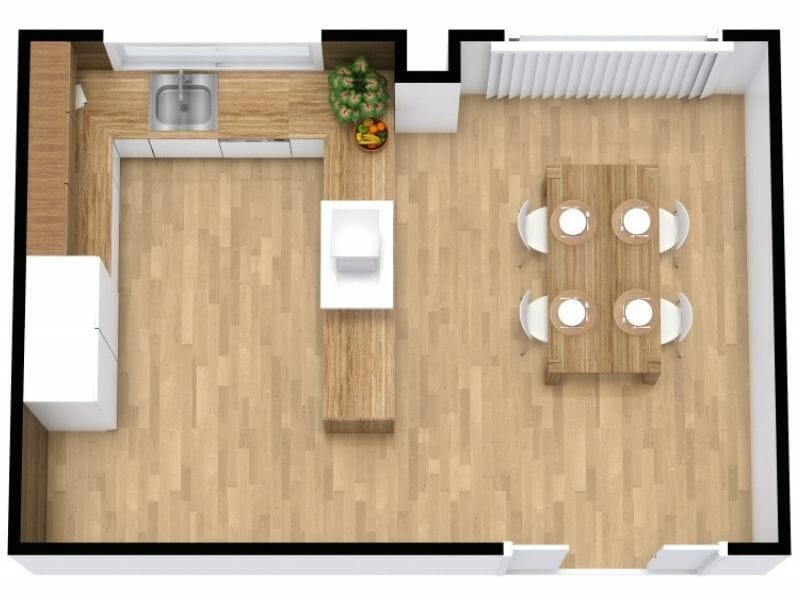
5 Ways to Make the Most of a U-shaped Kitchen Layout
The U-shaped layout is one of the most popular for good reason. All the tips you need to make the most out of your u-shaped kitchen layout.
